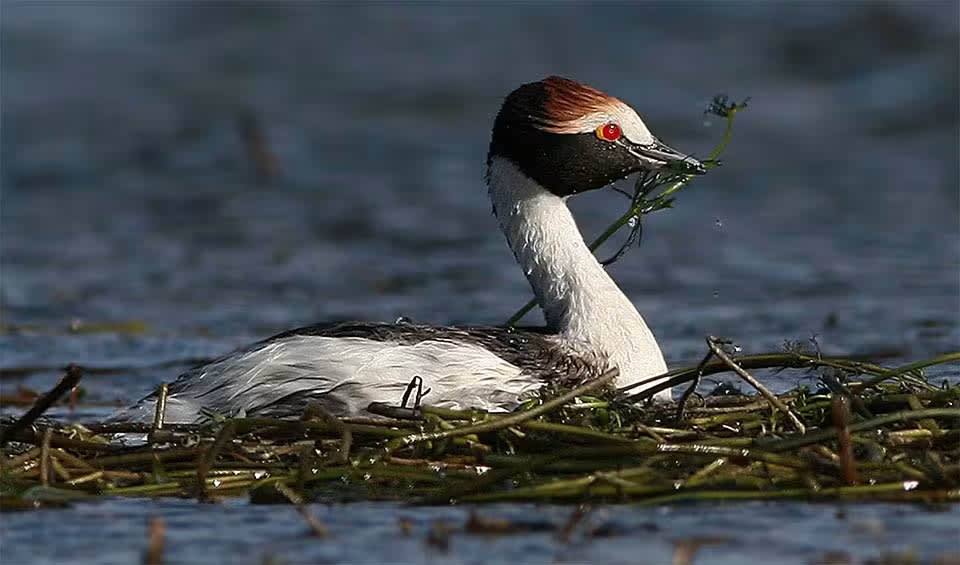A rare and strikingly beautiful bird found in the remote highland lakes of Patagonia in southern Argentina. This bird is known for its distinctive black-and-white plumage and its unique hood-like crest, giving it its name. The hooded grebe is medium-sized, with a white body, black wings, and a black head that contrasts sharply with its bright red eyes.
One of the most remarkable features of the hooded grebe is its crest, which is a black tuft of feathers that forms a hood over its head. This crest becomes even more pronounced during the breeding season, and the grebe uses it as part of its elaborate courtship displays. These displays are an important part of the hooded grebe’s mating ritual. Pairs of grebes perform synchronized dances on the water, which include head shaking, bill dipping, and sometimes even offering each other pieces of aquatic plants as gifts. These graceful and intricate dances help to strengthen the bond between mating pairs.
The hooded grebe is an excellent swimmer and diver, which is essential for its survival in the cold, windy conditions of the Patagonian lakes where it lives. Like other grebes, it has lobed toes instead of webbed feet. These lobed toes are wide and flat, helping the bird paddle through the water easily. The grebe’s body is streamlined, allowing it to dive deep into the water in search of food. Its diet mainly consists of small fish, insects, and other aquatic creatures.
A fun fact about the hooded grebe is that it was only discovered in 1974, making it one of the more recent bird species to be identified by scientists. Despite its striking appearance, the hooded grebe remained hidden in the remote Patagonian landscape for many years. Since its discovery, it has become a symbol of the need to protect the unique and fragile ecosystems of Patagonia.
Distribution
 Argentina
Argentina Chile
ChileAnything we've missed?
Help us improve this page by suggesting edits. Glory never dies!
Suggest an editGet to know me
Terrestrial / Aquatic
Altricial / Precocial
Polygamous / Monogamous
Dimorphic (size) / Monomorphic
Active: Diurnal / Nocturnal
Social behavior: Solitary / Pack / Herd / Flock
Diet: Carnivore / Herbivore / Omnivore / Piscivorous / Insectivore
Migratory: Yes / No
Domesticated: Yes / No
Dangerous: Yes / No




